- The US has discovered 2 billion tons of rare Earth minerals
- These minerals are essential for technology like phones and cars
- This could reduce reliance on China and boost the US economy
Published on Nov 18, 2024 at 10:02 AM (UTC+4)
Last updated on Nov 18, 2024 at 5:13 PM (UTC+4)
Edited by
Kate Bain
Scientists develop liquifying shape-shifting robot
Matter, 2023
0 seconds of 48 secondsVolume 90%
The US could become the world leader in minerals after two billion tons of rare Earth minerals were discovered in Wyoming.
These minerals are crucial to building the things we use in everyday life, like smartphones, hybrid cars, and even light bulbs.
As of now, the US imports around 74 percent of its minerals, while China dominates with 95 percent of global mineral production.
But with this exceptional find, things could change very soon.
DISCOVER SBX CARS: The global premium car auction platform powered by Supercar Blondie
Rare Earth Mineral found in the US
The company behind the discovery of 2 billion tons of Earth minerals is the American Rare Earths, which started drilling in March 2023.
At first, the estimated discovery was calculated at somewhere around 1.2 million metric tons, but they uncovered 64 percent more than they expected.
And the amazing part? They’ve only explored 25 percent of the land so far.
Some of the rare minerals found include neodymium, praseodymium, samarium, and terbium, which are crucial in manufacturing advanced technology like aircraft and electric vehicles.

Currently, the US is dependent on China for most of these minerals, but soon, the country might become self-dependent and boost its manufacturing on its own.
The discovery reminds us of a similar one made in Japan some time back, where they found 230 million tons of rare minerals in the Pacific Ocean.
This gave Japan a huge advantage in securing resources for its industries.
Even more minerals could be found at the site

Don Schwartz, the CEO of American Rare Earths said that usually, drilling finds less material over time.
However, in this case, the opposite happened.
The more they drilled, the more they found.
Another US company, Ramaco Resources, also reported finding rare minerals worth $37 billion near Sheridan, Wyoming.
But, American Rare Earths believes its discovery was even larger.
Could this be the breakthrough the country had been waiting for?

Meet Daksh: Not your typical pro, but definitely a pro at being fascinated by supercars, tech, and all things futuristic. When he's not nose-deep in work, catch him glued to anime screens or lost in the pages of a good book.
Toyota’s flying car successfully completes first test flight
- Toyota has started investing in eVTOLs
- They have partnered with US-based Joby aviation
- Take a look at the video below to see their flying car in action
Published on Nov 04, 2024 at 3:49 PM (UTC+4)
by Nalin Rawat
Last updated on Nov 05, 2024 at 12:44 PM (UTC+4)
Edited by
Tom Wood
Toyota's flying car test flight
Toyota
0 seconds of 1 minute, 0Volume 90%
Toyota Motor has just successfully completed its first test flight of its flying car, made in collaboration with US-based startup Joby Aviation.
The eVTOL (electric vertical takeoff and landing) is a prototype developed by Joby Aviation and has a top speed of about 320km/h.
Since these flying cars are quieter than helicopters, they are well suited for urban cities.
Imagine soaring through skyscrapers while also skipping traffic in such a cool ride.
DISCOVER SBX CARS: The global premium car auction platform powered by Supercar Blondie
Toyota and Joby Aviation’s flying car
This recent flight was completed in Japan after several tests had already been conducted in the US.
Toyota has also invested $500 million into the project with Joby Aviation in October 2024.
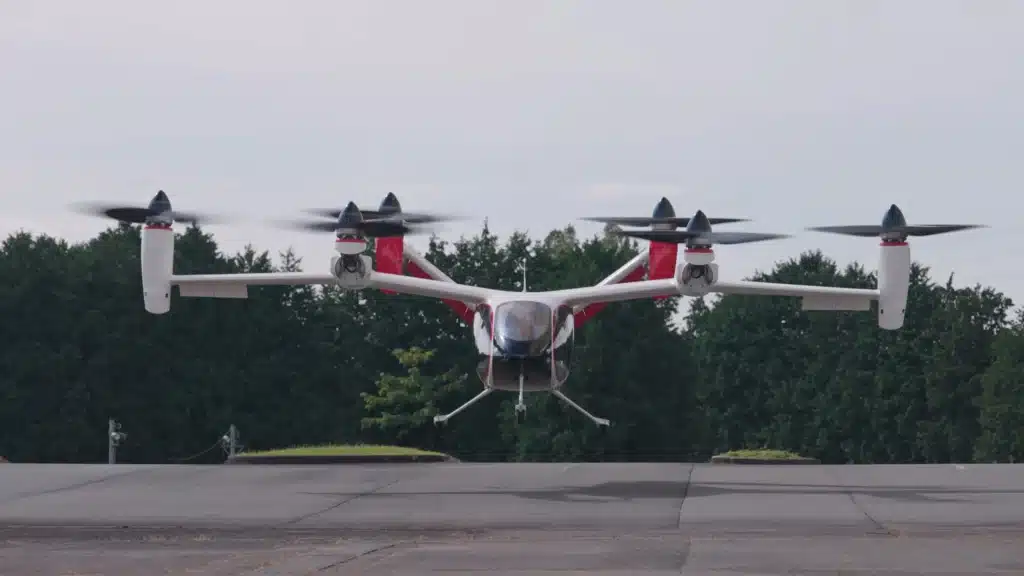
It seems the Japanese automaker wants to boost its investments in eVTOLs.
“It takes four to five hours to drive here from Tokyo, but flying would take just 25 minutes,” said Toyota Chairman Akio Toyoda.
“This will change people’s lifestyles,” he added.
if implemented properly, such a different method for urban transportation is bound to be a success.
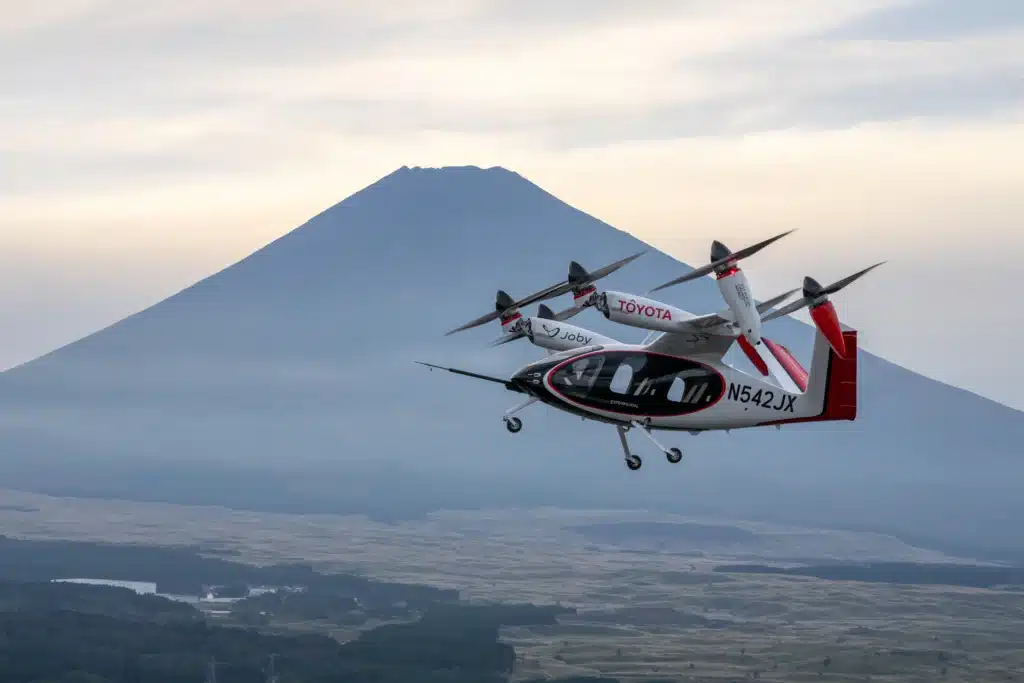
Other than that, the project is also crucial to Toyota’s goal of achieving carbon neutrality by 2050.
This isn’t the first time that Toyota has invested in aerial vehicles, but this particular flying car looks quite promising.
Joby Aviation, the California-based aviation company, already operates many flying cars in the US.
One of them is a hydrogen-powered air taxi that can travel over 523 miles (841km) nonstop and also produces water as a by-product.
More flying cars are on their way
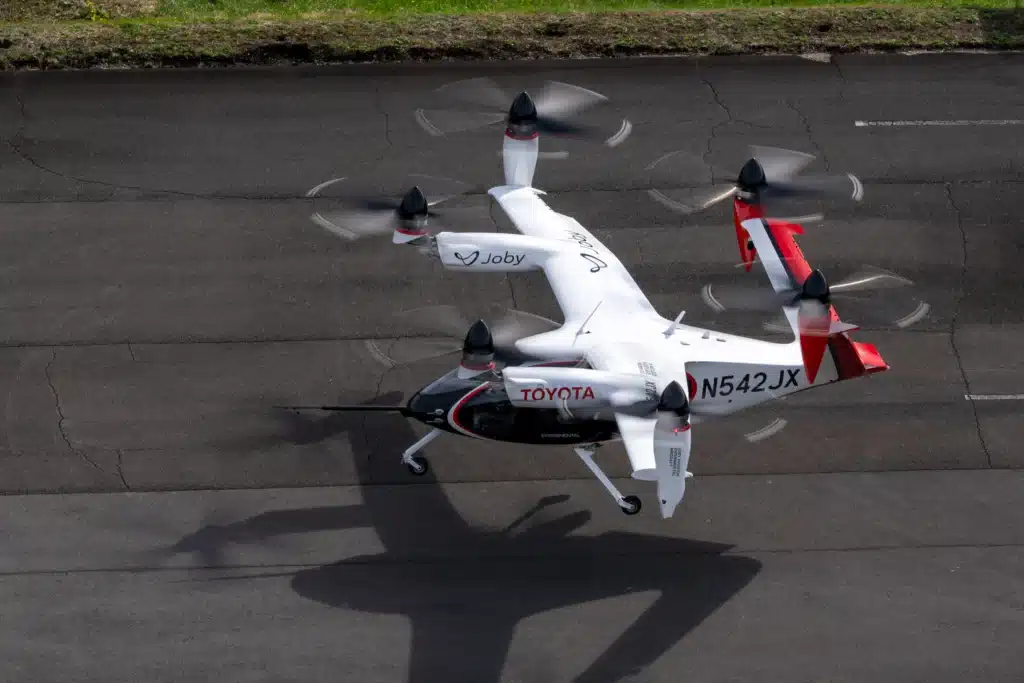
Toyota and Jobi Aviation are not the only ones in the race to make flying cars a reality.
Chinese automaker, Xpeng has also showcased multiple eVTOL designs that it plans to release quite soon.
One of them is a flying supercar that looks like it belongs in the future.
It kinda does, when you actually think about it.

Nalin started his career by working with various national newspapers in India. He has also worked as a writer/editor for many popular websites, while still pursuing his journalism and mass communication degree. Working as a digital nomad has allowed him to inform and educate through his work. When he is not writing, you can find him playing video games or travelling the mountains on his bike.
Everything Tesla’s new humanoid will be able to do to make your life easier
- Tesla’s Optimus robots are the future of technology
- These humanoids are designed to make things easier for everyone
- Tesla plans to keep the cost reasonable
Published on Oct 14, 2024 at 6:00 AM (UTC+4)
by Daksh Chaudhary
Last updated on Oct 11, 2024 at 6:06 PM (UTC+4)
Edited by
Tom Wood
Everything Tesla Optimus could do
AMARU
0 seconds of 1 minute, 3 secondsVolume 90%
Tesla’s Optimus robots are the future of technology and might soon become a part of our daily lives.
These humanoids are designed to make things easier for everyone, taking over everyday tasks and helping us in many ways.
At Tesla’s recent We, Robot event, Elon Musk proudly introduced the Optimus robots.
He shared his excitement, saying: “I think this would be the biggest product ever of any kind.”
DISCOVER SBX CARS: The global premium car auction platform powered by Supercar Blondie
Everything Tesla Optimus robots could do
The goal is simple – to create a robot that can do tasks like carrying groceries, babysitting, walking dogs, and even providing healthcare support.
These robots aim to make our lives smoother by taking care of the small and big chores that fill up our days.
During the event, the Optimus robots were even seen serving drinks and dancing, showing their flexibility and range of abilities.
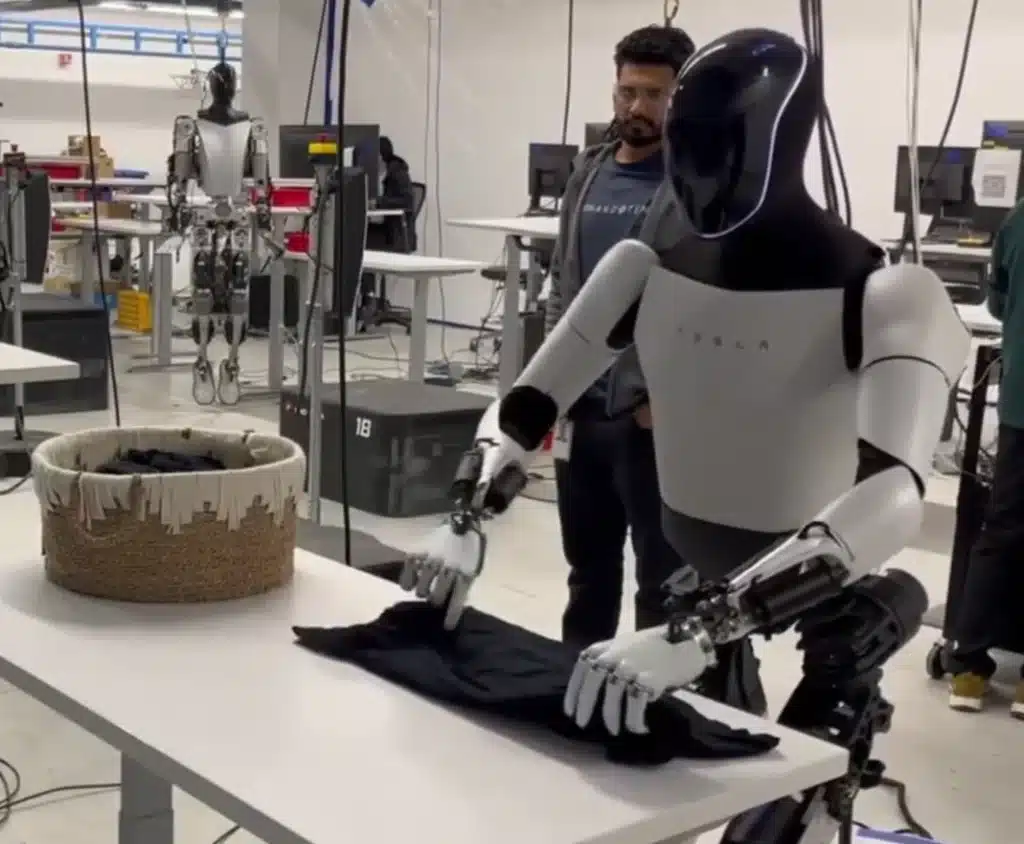
However, Musk has made it clear that this technology is not just for the wealthy.
He believes that everyone should be able to own an Optimus robot.
Tesla plans to keep the cost reasonable, with a future price estimate of around $20,000 to $30,000.
This makes it accessible to many people, which aligns with Tesla’s vision of creating technology for everyone.
These humanoids will be affordable
With futuristic products like the Robovan, Neuralink brain chips, and now the Optimus robot, the company is rapidly moving forward with Musk’s vision.
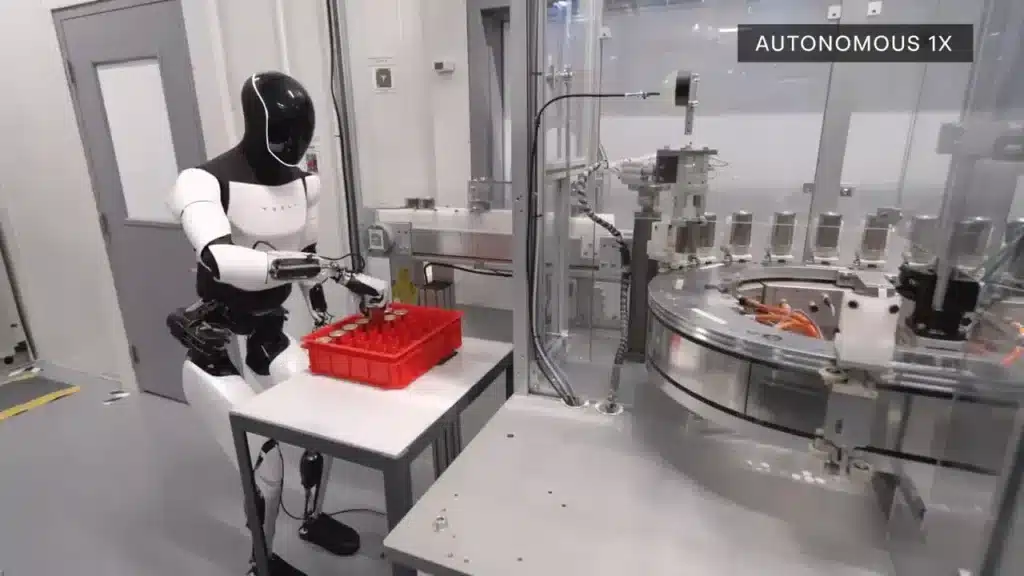
By making these robots affordable and capable of handling a wide range of tasks, it won’t be long before we see these humanoids in every household.
With such plans, it’s clear that Tesla is not just imagining the future but building it, one robot at a time.
The Optimus robot could soon become the ultimate helping hand in our everyday lives, changing how we work, relax, and live.

Meet Daksh: Not your typical pro, but definitely a pro at being fascinated by supercars, tech, and all things futuristic. When he's not nose-deep in work, catch him glued to anime screens or lost in the pages of a good book.
Optimus humanoids danced and served drinks to guests at Tesla’s We, Robot event
- Optimus robots made a huge impression at the We, Robot event
- The robots danced, served drinks, and played games
- These robots are expected cost around $30,000 in the future
Published on Oct 11, 2024 at 1:08 PM (UTC+4)
by Daksh Chaudhary
Last updated on Oct 11, 2024 at 1:08 PM (UTC+4)
Edited by
Tom Wood
Optimus Robots at We, Robot event
Arshjit Singh
0 seconds of 19 secondsVolume 90%
The Tesla We, Robot event wasn’t just about unveiling new vehicles – the Optimus Robots made a huge impression, too.
These humanoids stole the show by doing much more than just standing around – they were there to serve a purpose.
You could see them doing all sorts of things, like serving drinks to guests and dancing perfectly in rhythm with the music.
It was as if they were born to party rather than – ultimately – enslave all humanity.
DISCOVER SBX CARS: The global premium car auction platform powered by Supercar Blondie
Optimus Robots at the Tesla, We event
Imagine the coolest bartender you’ve ever seen, but now picture it as a robot.
An Optimus robot took drink orders from the crowd, handed out snacks, and even interacted with guests.
It waved to them, made a victory sign, a ‘rock on’ sign, gave them a thumbs-up, and nodded its head to the beats. It was like a mini-party host in action!
Optimus robot showing some moves #ElonMusk #WeRobot pic.twitter.com/sg9MrjD4SL
— Lost in Translation (@Chronicle1000) October 11, 2024
But, let’s not forget their style. The robots were dressed up for the occasion, wearing white shirts, black pants, and cowboy hats, making them look completely ready for the party.
We’ve seen Optimus robots fold clothes before, but this was a whole new level.
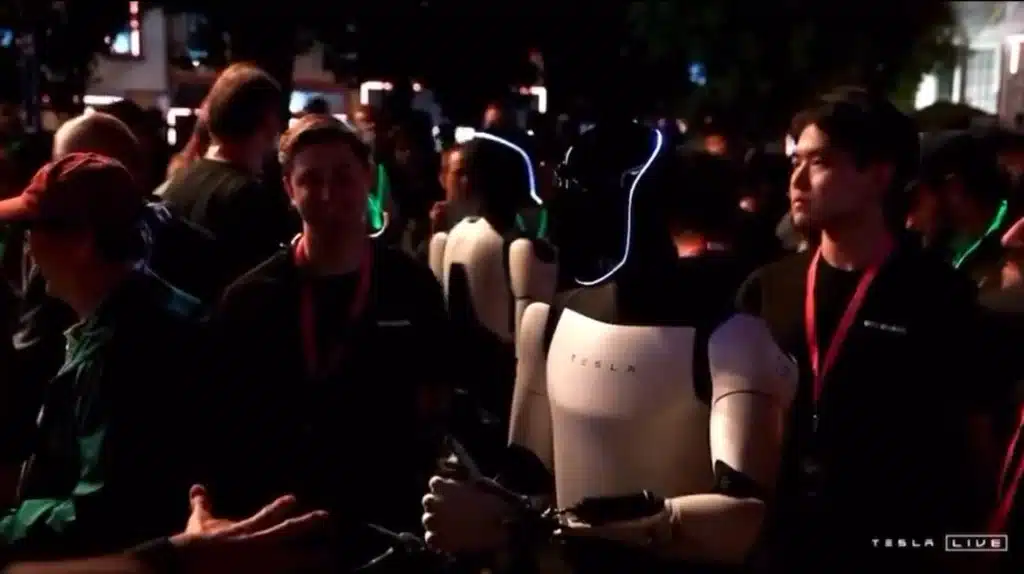
At another spot in the We, Robot event, one of the robots was spotted playing Rock Paper Scissors with a guest.
The funny part?
The robot lost, and its reaction was priceless.
It was like watching a human express disappointment.
These robots will be affordable
As the event continued, the robots showed off their dancing skills, and it was fascinating to watch – it looked like humans doing the robot dance but was actually robots grooving like humans.
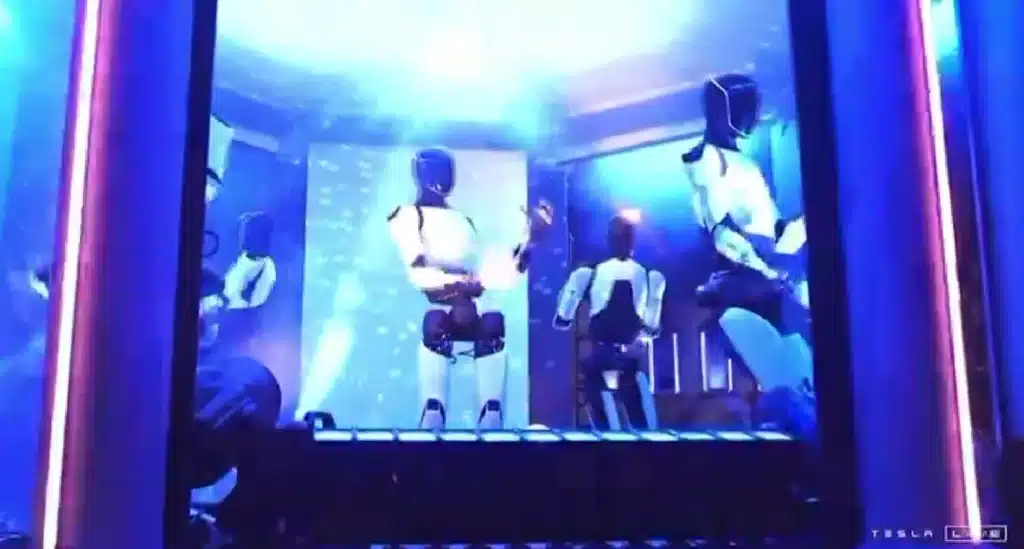
Elon Musk also shared some exciting news about these advanced machines.
Despite their capabilities, the cost of an Optimus Gen 2 robot is expected to be around $30,000 in the future, making them quite affordable.
Tesla’s Optimus robots are changing the game of how the future will look!

Meet Daksh: Not your typical pro, but definitely a pro at being fascinated by supercars, tech, and all things futuristic. When he's not nose-deep in work, catch him glued to anime screens or lost in the pages of a good book.
New Tesla Robovan that can transport 20 people unveiled at Tesla We, Robot event
- Robovan made a grand entrance at the Tesla We, Robot event
- The Robovan has stripe-designed headlights and taillights
- Tesla’s latest creation is designed to seat 20 passengers
Published on Oct 11, 2024 at 10:26 AM (UTC+4)
by Daksh Chaudhary
Last updated on Oct 11, 2024 at 5:41 PM (UTC+4)
Edited by
Tom Wood
Elon Musk estimated how much it'll cost to buy Optimus Gen 2
Tesla
0 seconds of 56 secondsVolume 90%
The Tesla We, Robot event finally happened, and much to the surprise of the crowd, the new Robovan made its grand entrance.
People have been eagerly waiting for this event to see what new and exciting things Tesla has planned.
Not long ago, Tesla teased fans with the release of some new vehicles, but they remained hidden under cover, building up the suspense.
During the 2024 Tesla We, Robot event, Elon Musk unveiled a new van called – imaginatively – the Robovan.
DISCOVER SBX CARS: The global premium car auction platform powered by Supercar Blondie
Tesla Robovan unveiled at Tesla We, Robot event
As it rolled onto the stage, it looked like it had just driven out of a futuristic video game.
The Robovan’s stripe-designed headlights and taillights, along with its boxy shape, made it stand out.
We’ve come to expect that sort of shape from Tesla these days, just look at the Cybertruck, for example.
— Dima Zeniuk (@DimaZeniuk) October 11, 2024The Tesla Robovan seats 20 and can be adapted for commercial or personal use—such as a school bus, RV, or cargo vehicle.
It’s fully electric pic.twitter.com/8OA2ViToSF
The silver body with black accents added to its stylish and modern look.
The Robovan is designed to seat 20 passengers, making it ideal for both commercial and personal use.
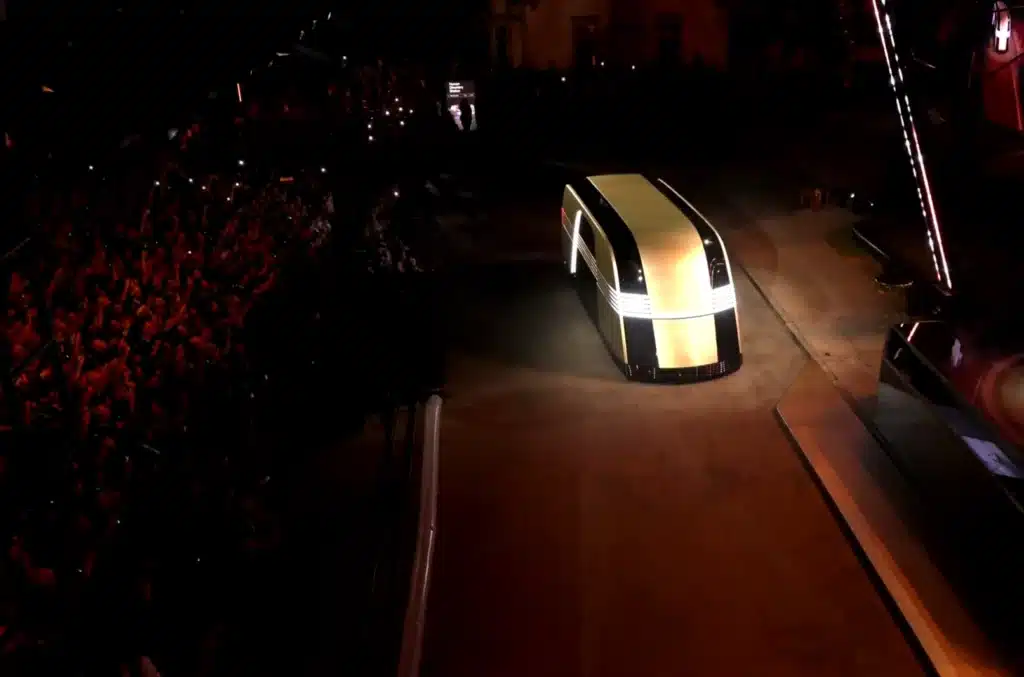
Whether you need a minivan for school, or a cargo vehicle, it seems like the perfect fit.
Elon Musk himself highlighted the impact of seeing the Robovan on the streets, saying, “Can you imagine going down the streets and this coming towards you?”
Honestly? He’s right.
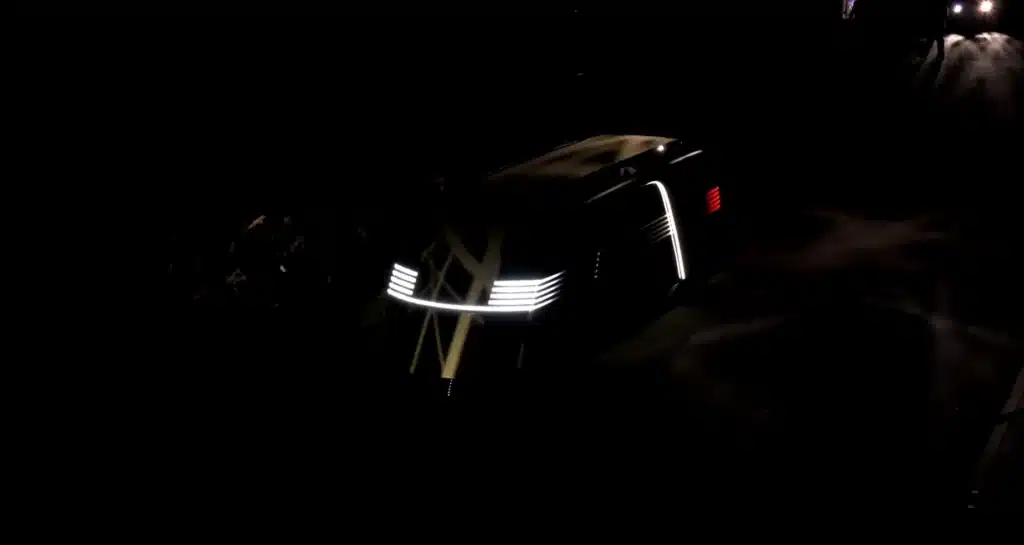
The Robovan looks like something entirely different from anything we’ve seen before.
The new vehicle looks futuristic
While we didn’t get a full look inside, the van appears futuristic, with comfortable seating and a spacious interior. It feels like Tesla wants to blend style with practicality.
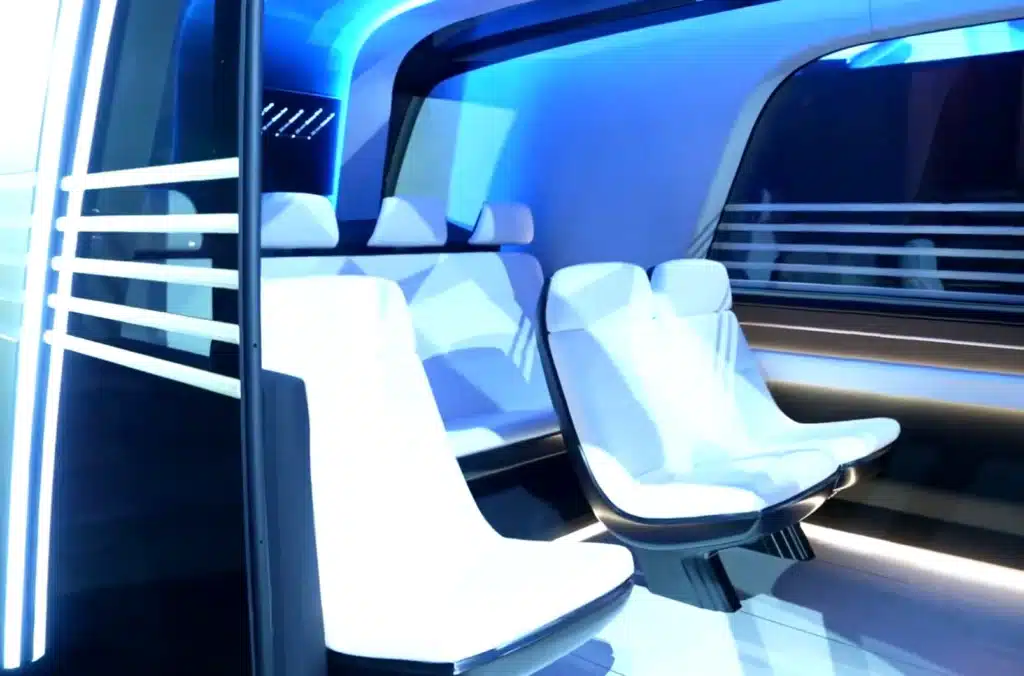
Musk shared that the Robovan is designed for ‘high density,’ meaning it’s meant to carry many people efficiently.
He also added: “We want to change the look of the roads.
“The future should look like the future.”
With Robovan’s launch, Tesla seems to have a clear vision of what our streets and transportation could look like, and it’s impressive.

Meet Daksh: Not your typical pro, but definitely a pro at being fascinated by supercars, tech, and all things futuristic. When he's not nose-deep in work, catch him glued to anime screens or lost in the pages of a good book.
Flying car that was scoffed at already has 3,200 preorders
- This flying car was scoffed at by some when it was first announced
- But now, it’s set to start production next year
- Thousands of preorders have already been made
Published on Sep 23, 2024 at 3:47 PM (UTC+4)
by Ben Thompson
Last updated on Sep 24, 2024 at 3:06 PM (UTC+4)
Edited by
Tom Wood
XPeng flying cars soaring above cities
xpeng_aeroht
0 seconds of 24 secondsVolume 90%
This flying car was once considered a ridiculous idea, but now it’s nearing closer to production.
With 3,200 preorders already put in, it’s evidently got an eager audience awaiting its release.
The Alef Model A Flying Car could be arriving as early as the end of 2025 and could be a huge game changer.
It’d be a full decade after Back to the Future predicted we’d be taking to the skies in automobiles, but who’s counting?
DISCOVER SBX CARS: The global premium car auction platform powered by Supercar Blondie
The flying car that could change the way we drive
Alef Aeronautics had unveiled the Alef Model A in 2023.
The flying car was going for $300,000 and was laughed off by many at the time.
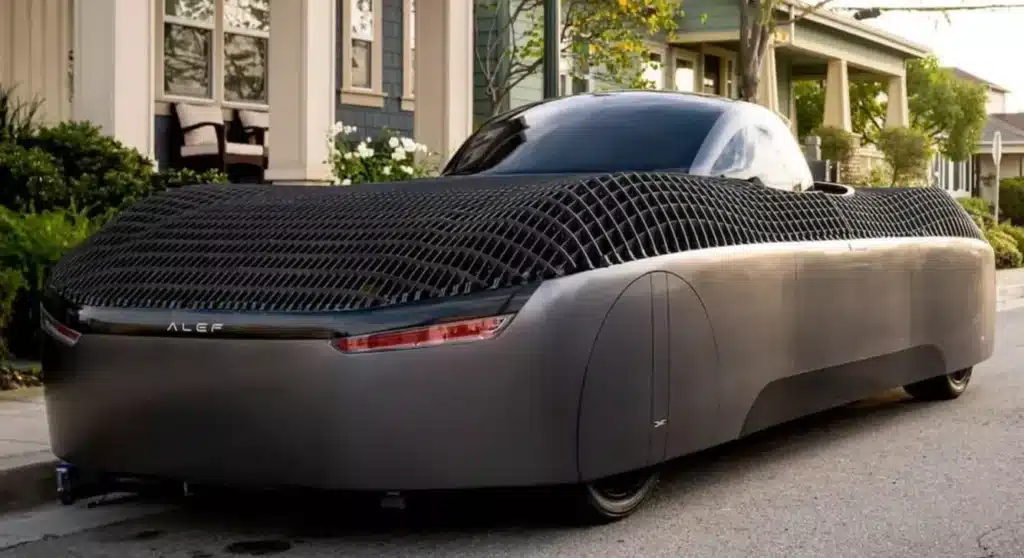
It’s long been a fantasy of humans that one day we’d have flying cars.
Works of science fiction have long included airborne vehicles in the day-to-day lives of their characters.
The idea that it would move from the realm of fantasy to reality was deemed silly.
But this may actually be a turning point.
Alef, which is based in California, have put pen to paper on a manufacturing deal.
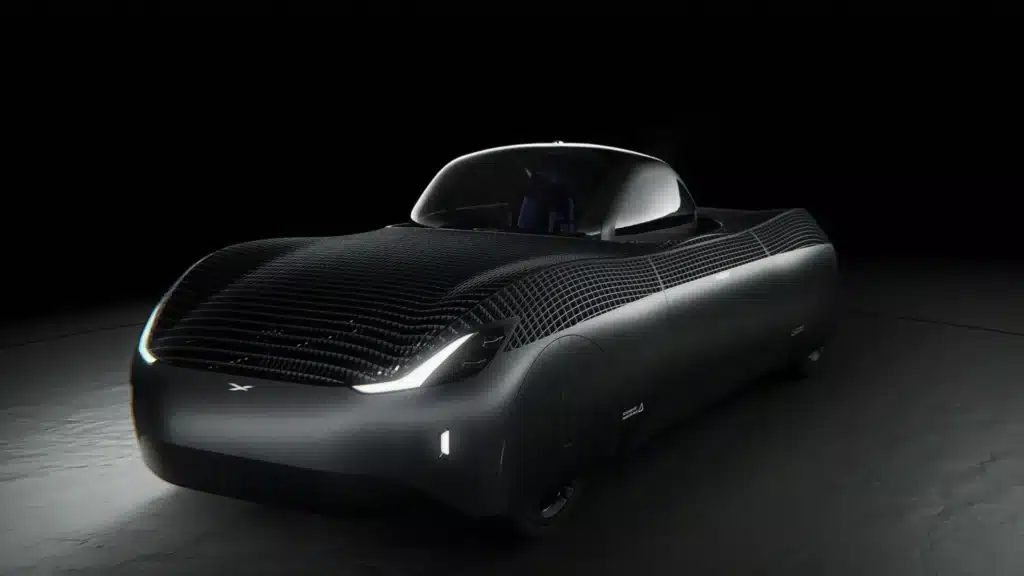
A Special Airworthiness Certification has already been granted by the US Federal Aviation Adminstration.
There’s also been a deal made to sell the Alef Model A through a dealership in the Golden State.
It may have started as a flight of fancy, but it might just become a reality very soon.
It’ll have stiff competition from the Xpeng X2, which has also received thousands of preorders.
What sets the Alef Model A apart?
Alef signed an agreement with PUCARA Aero and MYC to manufacture aviation-grade certifiable parts for the car.
As a point of reference, these two companies are suppliers for Boeing and Airbus, and also work on military airplanes and helicopters, as reported by carscoops.
Jim Dukhovny, the chief executive of Alef, said: “With a growing number of pre-orders and approaching its final design, Alef began to sign agreements to prepare for mass manufacturing for our Model A car.
“Safety is our number one priority, so we chose PUCARA Aero and MYC for their impeccable safety record, and compliance with major aviation authorities.”
As exciting as the prospect of a flying car is, there is something about the Model A that sets it apart from other flying cars that have been proposed before.
This isn’t a car with wings or a large runway to take off from.

Instead, four powerful propellers do the heavy lifting here, allowing the vehicle to ‘take off vertically’.
In this sense, it’s more akin to a helicopter than a plane.
It’s slightly different from this Chinese flying car, in that the Alef’s propellers are tucked inside the body of the car.
Alef hopes that the Model A will begin production in the fourth quarter of 2025, with a second car following afterwards.
The Model Z will reportedly be available for $35,000, which is a bargain frankly.
The future is nearly here.

Ben got his start in journalism at Kennedy News and Media, writing stories for national newspapers, websites and magazines. Now working as a freelancer, he divides his time between teaching at News Associates and writing for news sites on all subjects.